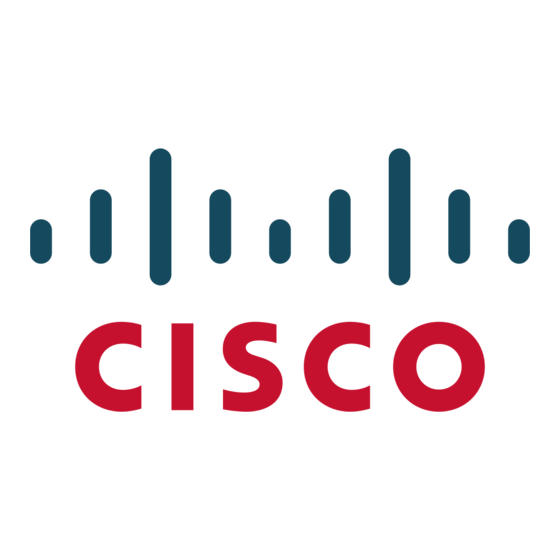Limitations and Restrictions
QoS
•
•
•
SPAN and RSPAN
•
•
•
Trunking
•
•
Release Notes for the Cisco Catalyst Blade Switch 3020 for HP, Cisco IOS Release 12.2(50)SE and Later
10
Some switch queues are disabled if the buffer size or threshold level is set too low with the mls qos
queue-set output global configuration command. The ratio of buffer size to threshold level should
be greater than 10 to avoid disabling the queue. The workaround is to choose compatible buffer sizes
and threshold levels. (CSCea76893)
When auto-QoS is enabled on the switch, priority queuing is not enabled. Instead, the switch uses
shaped round robin (SRR) as the queuing mechanism. The auto-QoS feature is designed on each
platform based on the feature set and hardware limitations, and the queuing mechanism supported
on each platform might be different. There is no workaround. (CSCee22591)
A QoS service policy with a policy map containing more than 62 policers cannot be added to an
interface by using the service-policy interface configuration command.
The workaround is to use policy maps with 62 or fewer policers. (CSCsc59418)
Egress SPAN routed packets (both unicast and multicast) show the incorrect source MAC address.
For remote SPAN packets, the source MAC address should be the MAC address of the egress VLAN,
but instead the packet shows the MAC address of the RSPAN VLAN. For local SPAN packets with
native encapsulation on the destination port, the packet shows the MAC address of VLAN 1. This
problem does not appear with local SPAN when the encapsulation replicate option is used. This
limitation does not apply to bridged packets. The workaround is to use the encapsulate replicate
keywords in the monitor session global configuration command. Otherwise, there is no
workaround. This is a hardware limitation. (CSCdy81521)
During periods of very high traffic when two RSPAN source sessions are configured, the VLAN ID
of packets in one RSPAN session might overwrite the VLAN ID of the other RSPAN session. If this
occurs, packets intended for one RSPAN VLAN are incorrectly sent to the other RSPAN VLAN.
This problem does not affect RSPAN destination sessions. The workaround is to configure only one
RSPAN source session. This is a hardware limitation. (CSCea72326)
Cisco Discovery Protocol (CDP), VLAN Trunking Protocol (VTP), and Port Aggregation Protocol
(PAgP) packets received from a SPAN source are not sent to the destination interfaces of a local
SPAN session. The workaround is to use the monitor session session_number destination
{interface interface-id encapsulation replicate} global configuration command for local SPAN.
(CSCed24036)
The switch treats frames received with mixed encapsulation (IEEE 802.1Q and Inter-Switch Link
[ISL]) as frames with FCS errors, increments the error counters, and the port LED blinks amber.
This happens when an ISL-unaware device receives an ISL-encapsulated packet and forwards the
frame to an IEEE 802.1Q trunk interface. There is no workaround. (CSCdz33708)
IP traffic with IP options set is sometimes leaked on a trunk port. For example, a trunk port is a
member of an IP multicast group in VLAN X but is not a member in VLAN Y. If VLAN Y is the
output interface for the multicast route entry assigned to the multicast group and an interface in
VLAN Y belongs to the same multicast group, the IP-option traffic received on an input VLAN
interface other than one in VLAN Y is sent on the trunk port in VLAN Y because the trunk port is
forwarding in VLAN Y, even though the port has no group membership in VLAN Y. There is no
workaround. (CSCdz42909).
OL-18274-02

